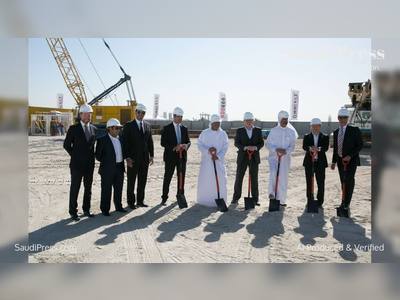
Saudi Real Estate Lending Surges as Banks Shift Focus
Commercial real estate loans grow at their fastest pace in years, outpacing retail segment
Real estate loans provided by Saudi Arabia’s commercial banks rose to a record SR922.2 billion ($245.9 billion) in the first quarter of 2025, marking an annual increase of just over 15 percent.
This represents the fastest year-on-year growth in nearly two years and underscores a strong rebound in property financing.According to data from Saudi Arabia's central bank (SAMA), this growth was primarily driven by increased lending for commercial real estate projects, despite home mortgages growing at a more moderate pace.
Retail mortgages, which comprise about 75.8 percent of total outstanding real estate credit, reached SR698.8 billion and grew by 11.7 percent year-on-year.
In contrast, corporate real estate loans expanded by nearly 27.5 percent over the same period to SR223.4 billion.This shift towards corporate lending signifies a significant change in banks' focus, with companies and developers becoming the dominant force in credit growth.
Previously, banks' loan books were heavily tilted toward retail customers due to a residential mortgage boom that saw home ownership rise from under 50 percent a decade ago to over 65 percent by 2024.The rebalancing of the lending landscape is largely driven by high-profile initiatives such as new residential communities, the NEOM smart city project, Red Sea tourism resorts, and large mixed-use developments.
These projects require significant funding for land acquisition, construction, and development.
The expected influx of capital for upcoming global events like the 2030 FIFA World Cup and Expo 2030 is further bolstering this momentum.The Saudi government has actively supported this lending shift towards commercial projects through measures aimed at strengthening the real estate and financial sectors as part of Vision 2030.
This includes promoting public-private partnerships, streamlining funding mechanisms for mega-projects, and enacting legislation to attract domestic and foreign investors.Banks are adapting their strategies to sustain lending growth while managing risks.
They remain well-capitalized with robust capital buffers, allowing them to expand credit without compromising stability.
Many lenders are exploring innovative ways to unlock liquidity and fund new loans, such as mortgage securitization.Despite rising interest rates, demand for credit remains strong due to the strategic importance and expected returns of large-scale developments.
Banks are competing to participate in these deals through syndication.Overall, this shift towards corporate real estate lending reflects Saudi Arabia's efforts to finance its development priorities and support Vision 2030 initiatives on a larger scale.
This represents the fastest year-on-year growth in nearly two years and underscores a strong rebound in property financing.According to data from Saudi Arabia's central bank (SAMA), this growth was primarily driven by increased lending for commercial real estate projects, despite home mortgages growing at a more moderate pace.
Retail mortgages, which comprise about 75.8 percent of total outstanding real estate credit, reached SR698.8 billion and grew by 11.7 percent year-on-year.
In contrast, corporate real estate loans expanded by nearly 27.5 percent over the same period to SR223.4 billion.This shift towards corporate lending signifies a significant change in banks' focus, with companies and developers becoming the dominant force in credit growth.
Previously, banks' loan books were heavily tilted toward retail customers due to a residential mortgage boom that saw home ownership rise from under 50 percent a decade ago to over 65 percent by 2024.The rebalancing of the lending landscape is largely driven by high-profile initiatives such as new residential communities, the NEOM smart city project, Red Sea tourism resorts, and large mixed-use developments.
These projects require significant funding for land acquisition, construction, and development.
The expected influx of capital for upcoming global events like the 2030 FIFA World Cup and Expo 2030 is further bolstering this momentum.The Saudi government has actively supported this lending shift towards commercial projects through measures aimed at strengthening the real estate and financial sectors as part of Vision 2030.
This includes promoting public-private partnerships, streamlining funding mechanisms for mega-projects, and enacting legislation to attract domestic and foreign investors.Banks are adapting their strategies to sustain lending growth while managing risks.
They remain well-capitalized with robust capital buffers, allowing them to expand credit without compromising stability.
Many lenders are exploring innovative ways to unlock liquidity and fund new loans, such as mortgage securitization.Despite rising interest rates, demand for credit remains strong due to the strategic importance and expected returns of large-scale developments.
Banks are competing to participate in these deals through syndication.Overall, this shift towards corporate real estate lending reflects Saudi Arabia's efforts to finance its development priorities and support Vision 2030 initiatives on a larger scale.











